Find out what the garden and propagation teams have been up to this week.
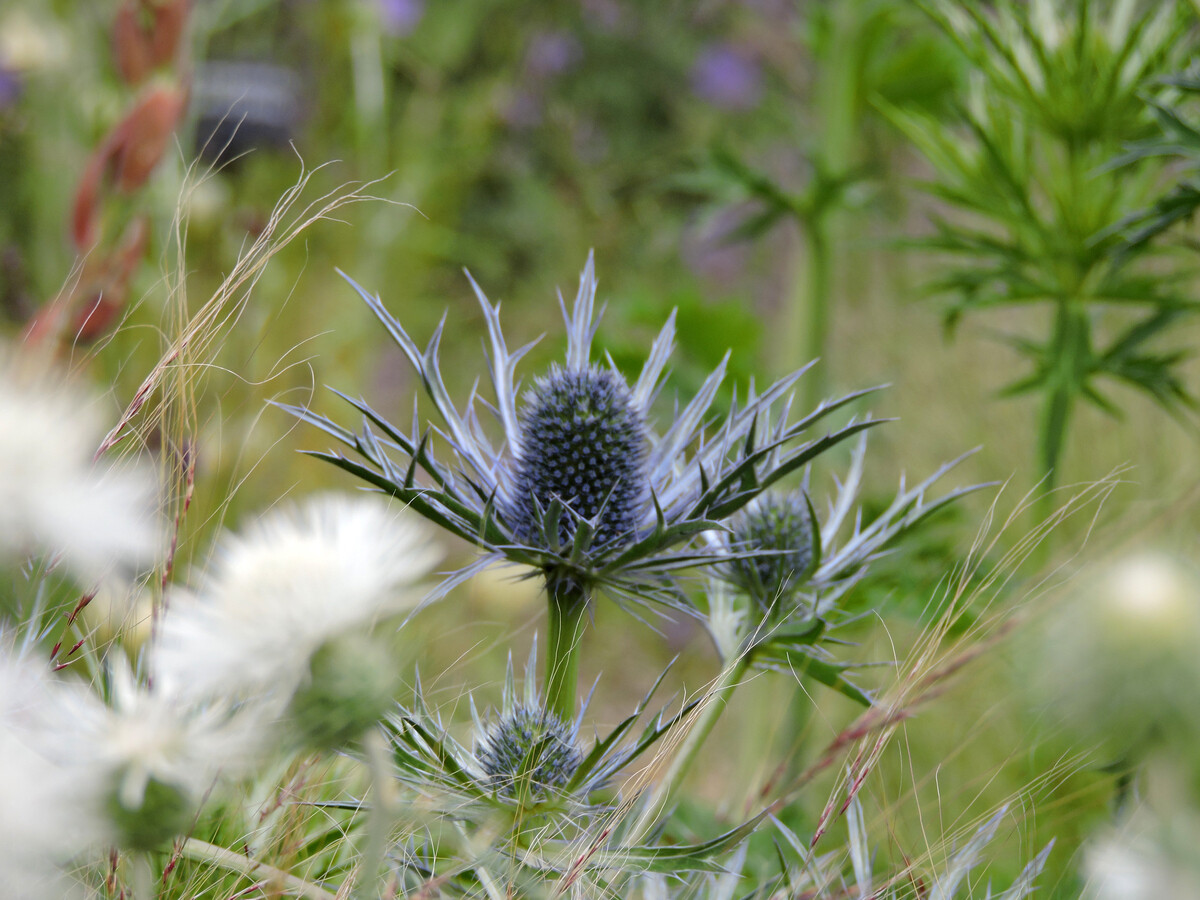
How to grow eryngium (sea holly)

Eryngium (sea holly) is sculptural and dramatic among contrasting colours and textures, especially soft, tactile grasses such as Stipa tenuissima.
It's a diverse genus with over 250 species from around the world. Found growing throughout our garden, but always in a position offering full sun. The individual flowers are small but arranged in tight cone-like or rounded heads, and often surrounded by spiny colourful bracts enhancing their beauty.
Foliage, although at times spiny, can be deeply cut and divided with some coloured in shades of metallic blue or purple to silver. A well-drained soil is ideal, but some of the taller species require a richer, more moisture-retentive soil to get the best out of them. There are two native species, the commonest Eryngium maritmum, which grows in sand and shingle around much of the coastline, including on our neighbouring Clacton seafront!
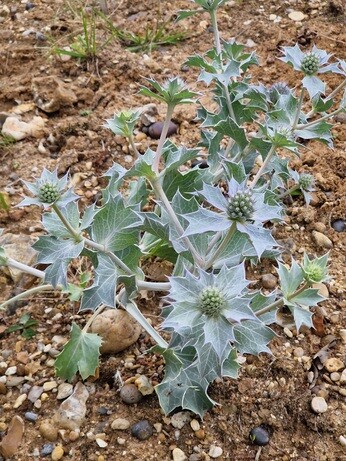
Beth used the heads of Eryngium giganteum in her floral displays, either when still milky-blue in colour, or more often, reserved for use in her dried arrangements once seedheads developed and bleached to a straw colour.
Great eryngium companion plants:
Propagation at Beth Chatto’s
Plants are raised by seed sown early in the year and potted on once developed. Some Mother plants on our dry stockbed are also left to self-seed with resulting seedlings carefully moved from the ground into pots once leaves have developed in early spring, (but before the taproot becomes too deep therefore making extraction difficult without damaging the root).
Wildlife credentials with Dr Chris Gibson
Eryngiums are possibly the most important insect plant in the garden in midsummer. Plants come in a variety of shapes and sizes, though the shorter, drought-tolerant forms with sometimes larger, often bluish flowerheads, are probably the best. Stand watching them in sunlight and you will see a steady progression of bumblebees, honeybees, smaller solitary bees, wasps and hornets, hoverflies, tachinid flies, butterflies, ladybirds and other beetles ... the list just goes on! Although more suited to sand-dunes than gardens, the native sea holly has particular local resonance as a source of a sweetmeat (candied eryngo root) for which Colchester was famous in centuries past, as much an icon of the place as the native oyster and Roman centurion.
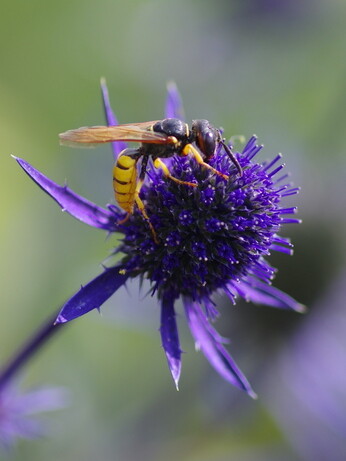
Favourites in Beth’s garden
Eryngium bourgatii (Mediterranean sea holly)- Individual basal leaves are deeply divided, crisply curled and prickle-edged with broad, silvered veins and scattered spots like tiny sequins. Heads of blue-green flowers crown a plant which is distinctive all summer. Height and spread: 70cm x 50cm
Eryngium planum 'Blue Hobbit' (blue eryngo)- Brilliant blue flowers, prolific flowering. Short, compact, rounded growing habit. Ideal for containers or front of the border. Height and spread: 30cm x 30cm
Eryngium planum 'Blue Hobbit'
Eryngium variifolium (Variable-leaved sea holly)- Forms a flat handsome rosette of green richly marbled leaves, heads of small metallic-blue spiky flowers in late summer. Height and spread: 40cm x 30cm
Eryngium variifolium
Eryngium x zabelii 'Violetta' (sea holly)- A very dark blue form, with a cone of deep violet flowers, surrounded by spiky collars. A great drought tolerant plant. Height and spread: 70cm x 40cm
Eryngium yuccifolium (Button snakeroot)- A dramatic perennial with rosettes of spiny margined, blue-grey leaves. Branched stems of cone-shaped, whitish green to flowers surrounded by spiny grey-green bracts. Height and spread: 1.2m x 60cm


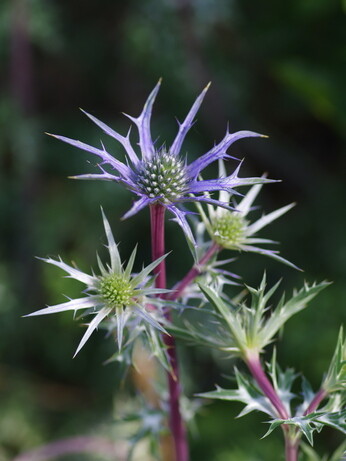
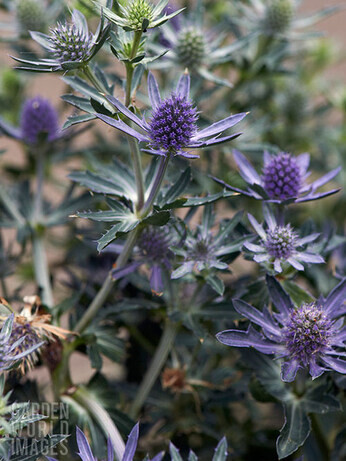
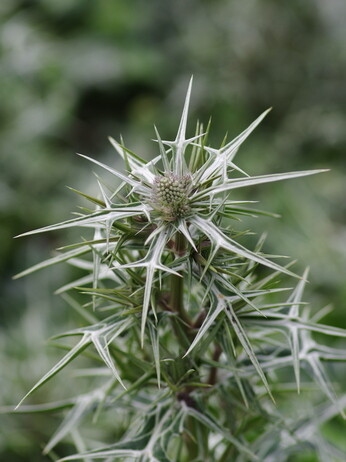
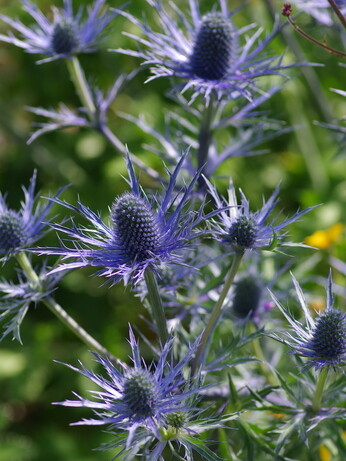
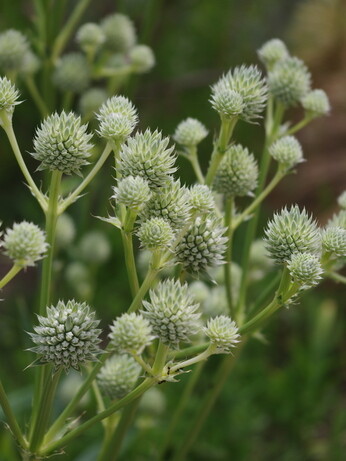

COMMENTS